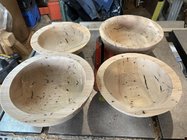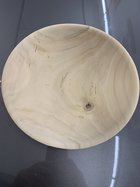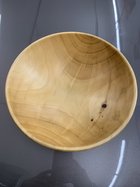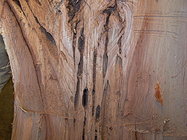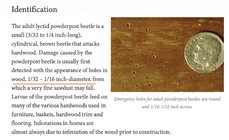- Joined
- Jul 18, 2018
- Messages
- 1,352
- Likes
- 2,930
- Location
- Baltimore, MD
- Website
- loujacobswoodturning.com
I wonder if you can help me with what insect made these tunnels in a soft (silver?) maple tree I processed and rough turned last weekend? The holes are about 1/8” or smaller in diameter, and (obviously) stained black around them. The tree was dead when it was cut (not by me), and I think it had been for a few years, though still contained some moisture. Is this carpenter ant damage? It is not just in the cambium, but riddled through the entire trunk. 